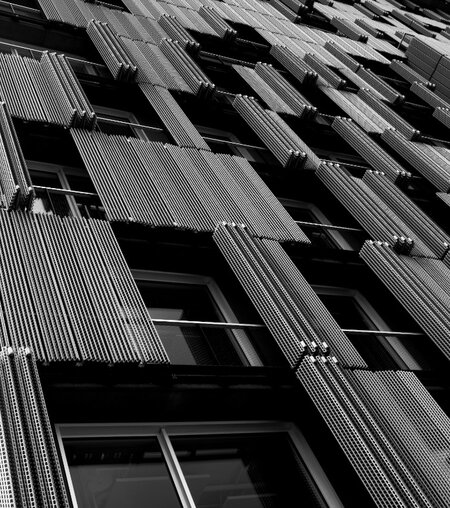Contact US
Keep in touch
Search
Enter your Keyword
Faq
Listed below are some of our more frequently asked questions.
If your question is not answered on this page, email us and we will gladly answer it for you. Click on any question to see the answer.
-
1. Is pre-paint better than post-paint?
YES. Coil coating is one of the best available technologies for applying paint to metal. Prepainting of metal helps to minimise environmental problems that would occur with postpainting. Such environmental problems include emission of volatile organic compounds (VOC), high usage of chemicals, water, and energy, and the disposal of waste. At the end of life the prepainted products can be recycled.
Prepainted metal is produced from flat metal strip that is cleaned, treated and coated in a continuous process. This yields better and more efficient cleaning, pre-treatment, painting and curing operations, and hence, a product of higher, and more uniform quality than is usually obtained when post-painting formed parts.
Prepainted material has shown competitive corrosion resistance vs. post finished products.For aesthetic issues, cut edges can be hidden, folded, roll formed or tucked away so that the bare edge can be kept out of sight. Moreover, the use of pre-paint solves manufacturing issues by increasing productivity, reducing manufacturing cycle time, providing faster throughput, and producing better yields compared to the conventional post-painting process.
-
2. What are the the environmental and costs advantages of prepainted metal?
Considerable cost savings with prepainted metal are derived not just on the material side, but in other areas of manufacturing. The use of prepainted metal reduces, or makes obsolete, the need for lubricants, pre-treatment, paint, energy and water, the emission of volatile organic compounds and waste disposal. Pre-paint allows for better manufacturing cycle time as metal arrives coated and ready for production. By eliminating a post finishing operation, you free up floor space. Additionally, since work-in-progress inventory is reduced, less floor space is required. Production capabilities can grow without adding exclusive manufacturing space.
The use of coil-coated metal simplifies manufacturing operations and provides drastic reduction in :- Manufacturing costs
- Energy costs
- Manufacturing lead time
- Logistics costs
- Financial cost of managing stocks (raw material, chemicals and intermediate storage)
- Taxes and insurance premiums (all taxes related to waste treatment are eliminated)
- 3. What does the coil coating process look like?
-
4. How does the coil coating process work?
Coil coating is a continuous and highly automated process for coating metal before fabrication. In one continuous process, a coil of metal moving typically around 100 meters per minute, is unwound and both the top and bottom sides are cleaned, chemically treated, primed, oven cured, top coated, oven cured again, rewound and packaged for shipment.
Since the process allows metals to be finished in one continuous pass, there is flexibility in how the metal is coated and the types of coatings. Organics and inorganics, such as polyesters, epoxies, vinyls, plastisols, acrylics, water-born emulsions, fluorocarbons, dry lubricants, treatment and primer combinations, can be applied. Prepainted coils can also be printed, striped and embossed to create special visual effects. -
5. Where can I get prepainted metal?
Prepainted sheet and coil metal is readily available everywhere in Europe. Most steel and aluminium manufacturers in Europe have their own coil coating facilities to satisfy the demand for prepainted sheet or coil stock. Also specialised independent coaters are available for supply. Most of these companies are members of ecca (European Coil Coating Association). Prepainted metal can be supplied in any size of order. Specialised Service Centres can help in facilitating the supply of small-order quantities, in smoothing out the variances in demand, and in cutting cost.
See the members list





